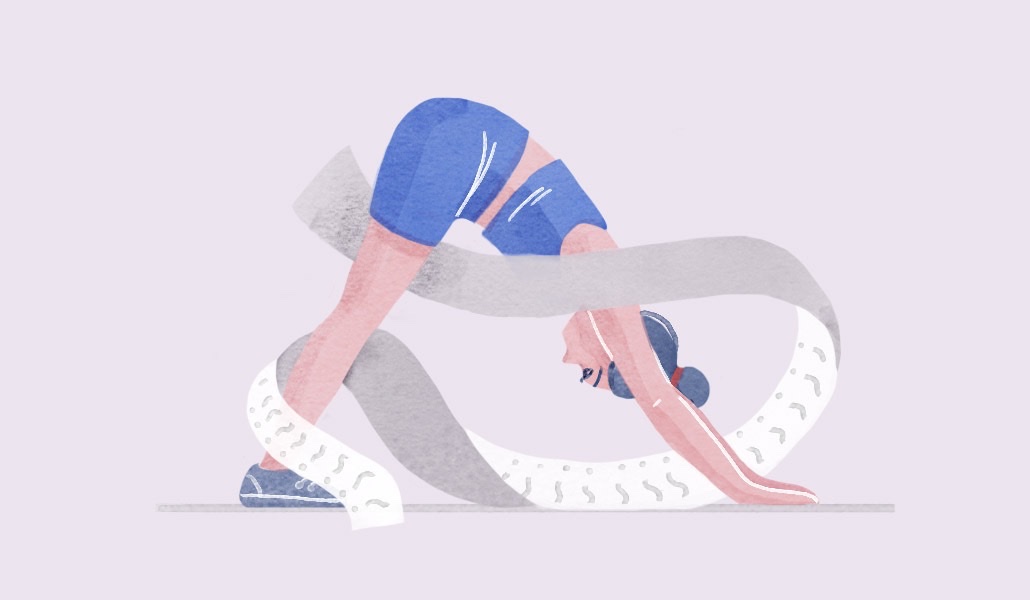Lunges for lunch: 8 ways to be less sedentary at work

The return to the office doesn’t have to mean a return to bad habits — like sitting behind a desk all day, which, as has been amply reported, is terrible for you.
Office workers spend two-thirds of their 9-to-5 in the sitting position, according to one study, which can lead to a whole range of ailments, including cardiovascular disease, diabetes, cancer and premature death.
Ready to do something about it? We spoke to a few well-being experts about the best ways — whether you’re back at the office or working remotely — of moving more throughout the day, improving your health and mindset along the way.
Hit the road
Leave a little more space for the other straphangers and consider walking or biking to work instead of using public transportation, suggested Michael Hamlin, a personal trainer and founder of Everflex Fitness in Calgary. Starting your day with exercise and fresh air can set the tone for an otherwise static workday. And just because you drive to work doesn’t mean you can’t commit to moving more. “I always tell people that even if they live too far away to walk, they can drive part way and walk the rest,” Hamlin said. “Not only does this increase your step count for the day, but the sunshine can help regulate your circadian rhythm.”
Get twisted
Being deskbound also doesn’t mean you can’t move more. Penny Weston, a U.K.-based fitness and nutrition expert who specializes in corporate wellness, suggests any number of easy exercises one can do while sitting at a desk, including sitting twists, shoulder blade squeezes and chin tucks. You can even stand up and do some light exercise like jumping jacks, pushups or squats, advised John Gardner, a personal trainer in New York and cofounder and CEO of personal training platform called Kickoff. “Just think about it: five minutes of trigger workouts four times a day is already 20 minutes of exercise,” he said.
Lunges for lunch
If a proper lunchtime workout is part of your workday routine, make sure to plan ahead: pack your gear and wear clothes to work that are easy to change into and out of, shared U.K.-based personal trainer Janice Hutton. Also, schedule your workout on your calendar in the same way you would a business meeting. “Treat it like an important commitment, and indeed it is — you are your most important commitment,” she said. And crucially, stick to it. “Commit to exercising during your lunch break, no matter how limited your time is,” she said.
Crunch club
Misery may love company, but so does wellness. Keep the motivation to move more by getting your coworkers involved. “Start a movement in your office, get people excited and hold one another accountable to move your body,” said Lalitha McSorley, a physical therapist and owner of Brentwood Physiotherapy in Calgary. Many workplaces offer formalized fitness challenges or wellness programs, Hamlin pointed out. “Joining a challenge can help motivate you to stay active and can also be a fun way to connect with colleagues,” he said. “When you have others spurring you on, you are more likely to stay active in the office setting.”
Break out
One of the more obvious ways to keep from being sedentary is to simply get up from behind that desk and move about every half hour or so. Hamlin recommends setting an alarm on your phone or computer to remind you to take a break and walk around the office, head out for a coffee run, or whatever. Taking breaks can improve your cardiovascular health and boost your energy, Hamlin pointed out. And it’s not just good for your body. Those time-outs can also prevent fatigue by giving your brain a breather, lifting your mood and motivation, noted Krystal L. Culler, founder and creative director of Virtual Brain Health Center in Cleveland.
Take a stand
The standing workstation is another way to keep from becoming a desk potato. McSorley is a big fan of the trend, noting that standing desks can help improve posture, increase blood flow and burn more calories versus sitting. Gardner suggested going one further and getting an under-desk cycle or treadmill. And if you think a light stroll while working at your standing desk can’t do much, think again. “Slow walking increases your circulation and helps your muscles from getting stiff. Walking on a desk treadmill also gives you a posture change so that you’re standing instead of sitting all day,” as physical therapist Dave Candy recently told Well + Good.
Walkie talkie
One-on-ones with colleagues don’t have to happen in a conference room — take a lap down the block while you do it. As one study found, doing so can increase employee well-being, innovation and productivity. It also boosts creativity, mood and an employee’s sense of support, noted Stephanie Harrison, a well-being expert and founder and CEO of The New Happy. “It opens up possibilities for greater connection and collaboration,” she said. Alexis Haselberger, a professional coach in San Francisco, added, “When you’re in a one-on-one or in listening mode versus presenting mode, take a walk and join the meeting from your phone.”
Follow the leader
Finally, employees are much more likely to move more at work if they see that behavior being modeled by not only their peers but also their bosses, said Oceanside, California-based health and wellness coach Stephanie Averkamp. Employees “want to know it’s OK to take time for movement,” she said. An employer, she added, might even consider scheduling “Movement Minutes,” where a group meeting kicks off by encouraging participants to move about however they feel for 60 seconds before getting down to business. “If you encourage movement at work, let your employees know, and let them see you leading by example.”
